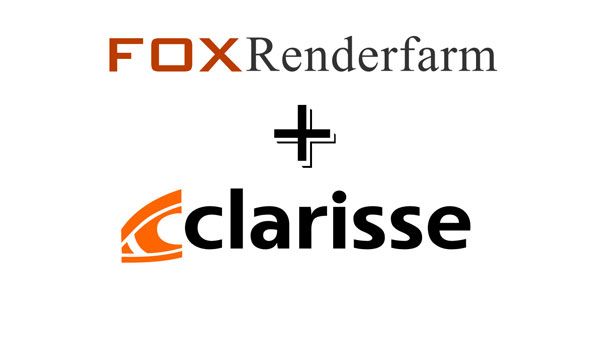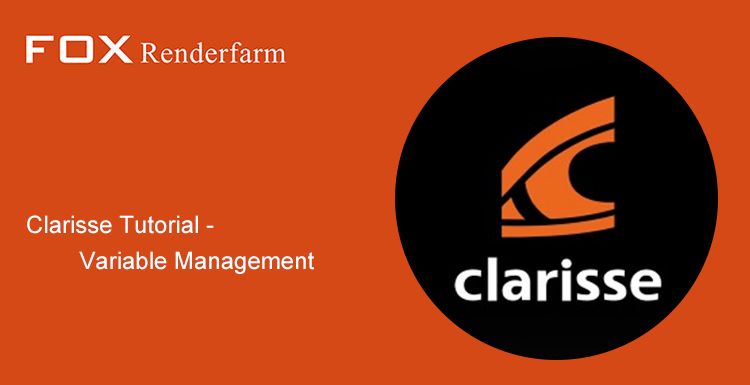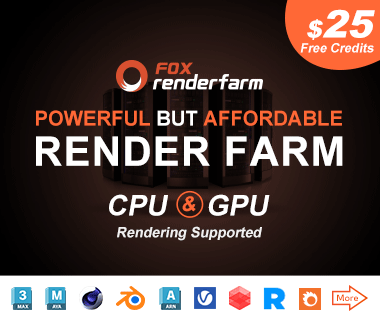Clarisse iFX 4.0 SP5 and Maya to Clarisse Tool V2 Released

The fast cloud rendering services provider and GPU & CPU render farm, Fox Renderfarm, will share with you a new version of Clarisse.
Clarisse iFX 4.0 SP5 released
Clarisse has been updated to 4.0 SP5! This time, the processing of "Light Path Expressions" has been expanded, and a new firefly filtering system has been added to facilitate more realistic and flexible rendered output.
Although Clarisse iFX 4.0 has been releasing service pack updates this year, this time SP5 is the biggest update ever. The update extends the software's handling of Light Path Expressions, including the option to output the variance of the LPE for rendering denoisers that support difference as input.
It is also possible to export lobe constant values - used in the Disney Principled, Physical Hair, and clear-coat materials to simplify the process of baking textures during look development.
Isotropix has also introduced a new clamping method that ensures a more accurate reconstruction of channels from LPEs during compositing.
New firefly filters and improvements to the Standard materials
Other changes in SP5 include the addition of firefly filtering attributes to Clarisse iFX's path tracker to reduce artefacts and noise in "difficult" lighting configurations. By using Fresnel normals to calculate the Fresnel effect, the energy conservation model on the software's standard materials is improved, and the rendering effect will be more realistic.
Maya/Clarisse Bridge Tool V2.0 released
Seeing a lot of friends here who use Maya and Clarisse must have a converter. Tell you, it really does! And recently updated to version 2.0. This tool called Maya / Clarisse Bridge Tool was developed by FX TD Muhammad Etman of Egyptian VFX company Aroma Studios. This tool can export Maya scenes to Clarisse iFX. Allows users to export Maya scenes directly to Clarisse iFX without having to use intermediate file formats such as Alembic. Although it does not create a live link between the two applications, after setting up the export, you can update the Clarisse scene with a single click.
The process supports geometry, shaders, textures, lights and animated cameras, and supports shaders and UDIM UV layout formats for each component.
During the export process, the scene is automatically converted between standard scale units, co-ordinate settings, and color spaces used in the two host applications.
Assets using Arnold's Standard Surface shader will be converted to the Clarisse iFX’s Disney principled shader: a process that Etman calls pretty much one-to-one conversion."
Recently updated to version 2.0, which improves performance by updating lights and shaders in real-time. It is said that the shader conversion process is now "4-5x faster" than the original release. In addition, Alembic data is now supported, which means that animations can be transmitted, including "multiple shape objects (like) Skin Cluster". Export should also now preserves the hierarchies of all object types.
Fox Renderfarm hopes it will be of some help to you. It is well known that Fox Renderfarm is an excellent cloud rendering services provider in the CG world, so if you need to find a render farm, why not try Fox Renderfarm, which offers a free $25 trial for new users? Thanks for reading!
Read more: https://gumroad.com/l/hgTKw
Read more: https://forum.isotropix.com/viewtopic.php?f=167&t=6077
Recommended reading
Top 9 Best And Free Blender Render Farms of 2025
2024-12-30
Revealing the Techniques Behind the Production of Jibaro "Love, Death & Robots", Which Took Two Years to Draw the Storyboard
2025-02-10
Top 10 Free And Best Cloud Rendering Services in 2025
2025-03-03
Top 8 After Effects Render Farm Recommended of 2025
2025-02-10
Top 5 Best and Free 3d Rendering Software 2025
2025-02-10
Shocked! The Secret Behind Using 3D to Make 2D Animation was Revealed!
2025-02-10
How to Render High-quality Images in Blender
2024-12-04
Easy Cel Shading Tutorial for Cartoon in Blender Within 2 Minutes
2025-02-10
Partners
Previous: Ornatrix Plugin Tutorial in 3ds Max
Next: The Essential Thinking Of Roughness And Anisotropy (2)
Interested






